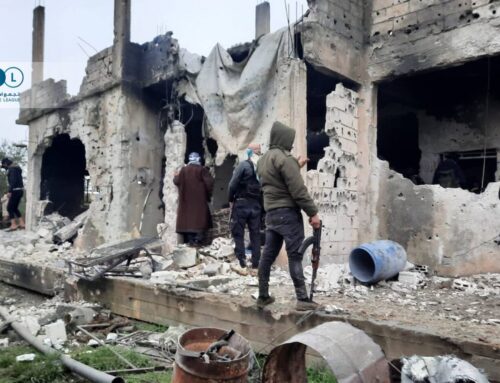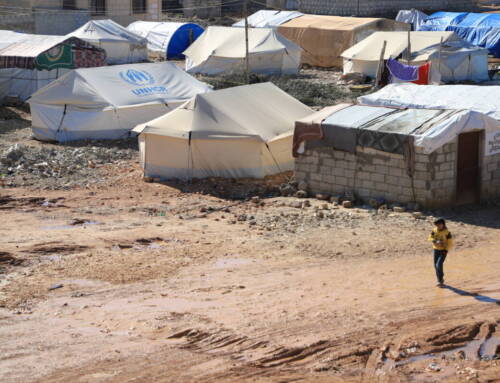Homs insider: Regime could not win militarily
May 5, 2014 As of Monday afternoon, rebel fighters in […]
5 May 2014
May 5, 2014
As of Monday afternoon, rebel fighters in the 13 besieged neighborhoods of Old Homs had yet to begin an evacuation process outlined in a ceasefire agreement reached by government and opposition forces last Friday. “The actual work could begin Tuesday,” Nour, an activist inside Old Homs, told Syria Direct Monday.
Per Friday’s agreement, opposition fighters will be allowed to relocate, along with their light weaponry, from Homs’ long-besieged Old City to rebel-held areas in northern Homs province. The deal would effectively leave Homs city—known in opposition circles as “the capital of the revolution”—under full regime control, dealing a major symbolic blow to Syrian rebels.

The agreement would also allow require rebels to release regime prisoners and permit the entry of humanitarian aid into nearby areas encircled by opposition forces, says Hassan abu a-Zain, a 28-year-old spokesman for Homs’s Youth Council. He tells Syria Direct’s Osama Abu Zeid that pro-Assad forces engineered the agreement “to take control of the city with as few casualties as possible,” having failed to dislodge rebel fighters through military efforts.
Q: What are the details of the agreement with the regime regarding taking rebels out of Homs?
The regime had asked us to negotiate nearly 20 days ago in order to come to an agreement for our exit out of the blockade. On Thursday, we agreed to the first phase—an immediate ceasefire until the other phases are completed. [On Saturday], we agreed on the final details about how rebels would exit to northern Homs with their weapons.
Q: What are the stages, conditions and demands of the truce?
– A complete ceasefire in the besieged neighborhoods and al-Waer [which is considered the largest neighborhood of Homs in terms of population, and is under FSA control].
– A ceasefire in the [Shiite] villages of Nabl and a-Zahra in Idlib province, and the entry of humanitarian aid into the neighborhoods besieged there by rebel forces.
– The exit of fighters with light, individual weapons and with half of their medium ordnance (machine-guns) to liberated areas in northern Homs.
– Rebels will release 70 regime prisoners, most of them from the National Defense Forces [a semi-official, pro-Assad paramilitary force] rather than from the Syrian army, including a female Iranian detainee.
– Combatants and citizens will leave the besieged area under United Nations and Red Cross supervision.
– Prisoners will be released and humanitarian aid will enter Nabl and a-Zahra after the combatants exit Homs safely to the northern suburbs.
– After a successful withdrawal, a second round of negotiations will begin regarding the al-Waer neighborhood. The text of the agreement pertains to the exit of all people under siege, whose numbers are estimated between 2,200 and 2,400 revolutionaries; they will be moved in 40 convoys, all of which will be under the supervision of a United Nations representative. Regime police will also supervise the convoys heading towards the northern suburbs.
Q: Given that negotiations have been ongoing for the past 20 days, why has there been such intense violence continuing during this period?
After signing a draft of the agreement, the NDF rejected it and led a fierce military campaign against the besieged area. But the campaign failed to enter the blockades areas due because of rebel steadfastness. After the NDF and regime forces continued to sustain heavy losses, the groups became convinced that current conditions would not allow them to enter Homs militarily and that the only way to enter would be through renewed negotiations, attempting to take control of the city with as few casualties as possible.
For more from Syria Direct, like us in Facebook or follow us on Twitter.






